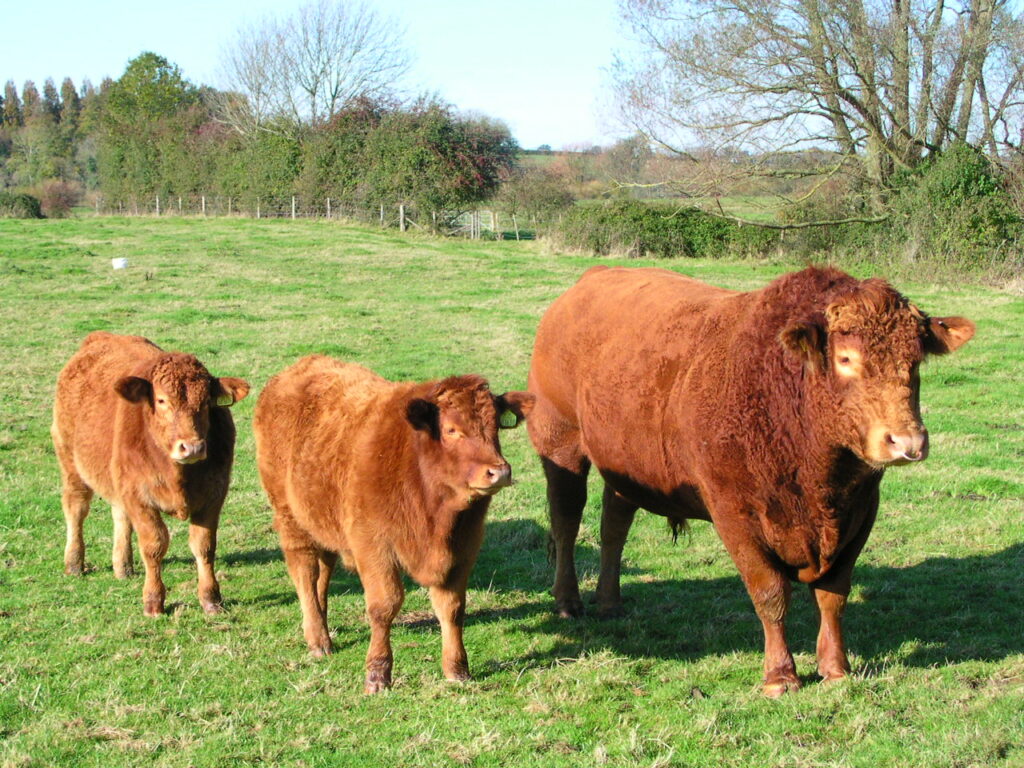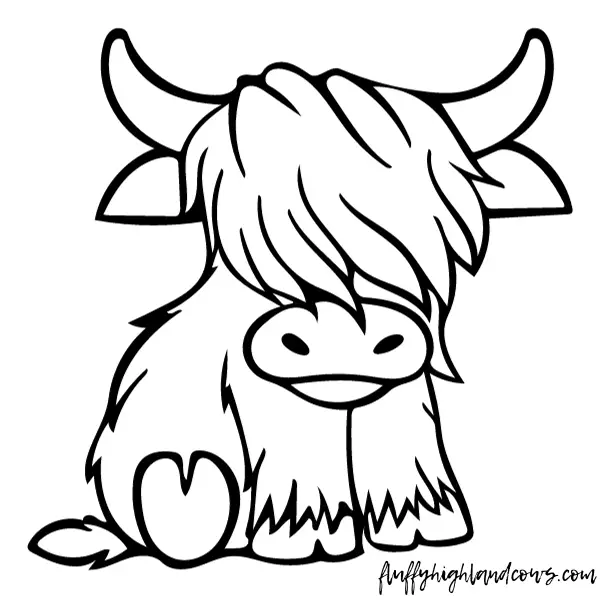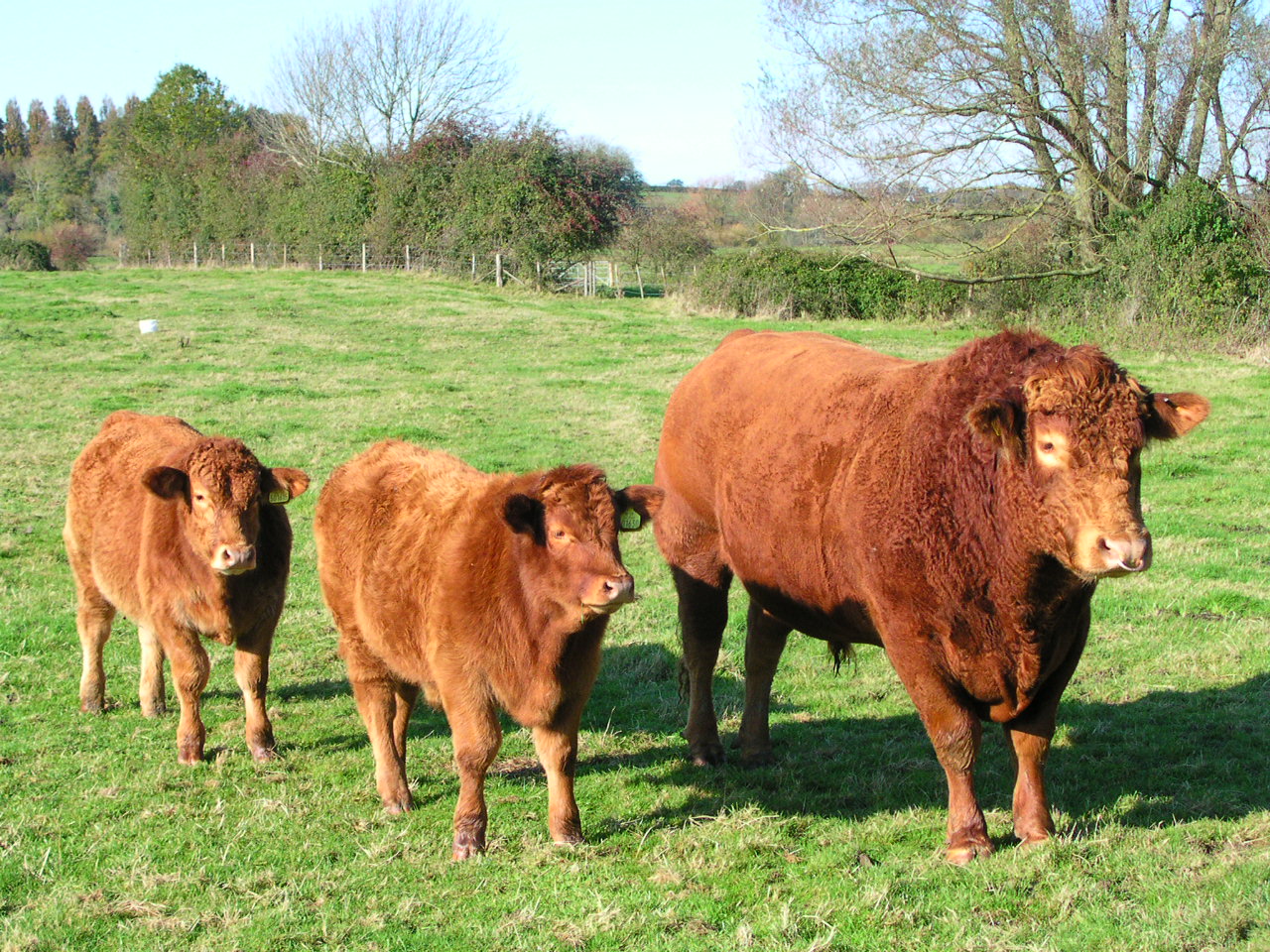South Devon Cattle: The Gentle Giants of the Pasture
South Devon cattle, known for their impressive size and gentle nature, are a distinguished breed in the world of agriculture. Originating from South West England, these cattle have become a symbol of robustness and productivity in the beef industry.
This article explores the history, characteristics, and modern-day significance of South Devon cattle.

Historical Background
South Devon cattle, one of the oldest English breeds, have their origins in the counties of Devon and Cornwall in South West England. Their history dates back several centuries, with the breed being formally recognized in the late 19th century.
Traditionally used in mixed farming systems, South Devon cattle were valued for their dual-purpose qualities, providing both milk and meat.
Physical Characteristics
South Devon cattle are the largest of the British native breeds. Bulls typically weigh between 2,200 to 2,800 pounds, while cows weigh around 1,400 to 1,800 pounds.
They are known for their rich, red-brown fluffy coat, although the shade can vary from light to dark. The breed is naturally polled (hornless) and is recognized for its well-muscled body and deep, broad frame.
Temperament
One of the most notable traits of South Devon cattle is their calm and docile temperament. This gentle nature makes them easy to handle and manage, a quality highly valued by farmers and ranchers.
Their docility also contributes to efficient weight gain and meat production, as less stress in animals typically leads to better growth rates.
Meat Quality and Production
South Devon cattle are primarily raised for beef production. Their meat is known for being tender, well-marbled, and flavorful.
The breed’s efficient feed conversion and natural growth rate make them an excellent choice for beef farmers looking for high-quality meat production.
Role in Sustainable Farming
In the context of sustainable agriculture, South Devon cattle offer several benefits. Their ability to thrive on grass-based diets and their efficient feed conversion align with eco-friendly farming practices.
Additionally, their adaptability to various climates and environments makes them suitable for diverse farming systems.
Modern Significance
Today, South Devon cattle continue to be a popular choice in the beef industry, both in the UK and internationally. They are often used in crossbreeding programs to enhance traits like size, growth rate, and meat quality in offspring.
Their contribution to the genetic diversity of cattle breeds and their role in sustainable beef production underscore their ongoing importance in modern agriculture.
Comparison to Highland Cattle
This table highlights the key similarities and differences between Highland cows and South Devon cattle.
| Feature | Highland Cows | South Devon Cattle |
| Origin | Scottish Highlands | South West England (Devon and Cornwall) |
| Size | Medium to large; bulls around 1,800 lbs, cows around 1,100 lbs | Largest of the British native breeds; bulls around 2,200 to 2,800 lbs, cows around 1,400 to 1,800 lbs |
| Coat | Long, flowing hair with a thick, woolly undercoat | Strong, curly coat, usually a light medium red color, but can vary in shade |
| Color Varieties | Commonly reddish-brown, but can vary | Typically rich, medium red, with variations in shade |
| Temperament | Generally docile and easy to handle | Known for a very quiet and docile temperament, easy and safe to handle |
| Climate Adaptability | Highly adaptable to harsh, cold climates due to thick coat | Adaptable to various climates, efficient in colder environments |
| Meat Quality | Lean, flavorful, and tender; known for high-quality beef | Well-marbled and tender, known for high-grade carcasses and quality beef |
| Sustainable Farming | Suitable for sustainable farming due to low maintenance and ability to graze on rough terrain | Suitable for sustainable farming due to efficient feed conversion and grass-based diet |
| Horns | Typically horned | Naturally polled (hornless) |
| Special Characteristics | Iconic appearance and cultural significance in Scotland | Largest of the British native breeds, known for fast growth rate and early maturity |
While both breeds are known for their hardiness and meat quality, they differ in their origins, size, coat characteristics, and specific adaptations to their environments. Both breeds, however, are valued for their temperament and suitability for sustainable farming practices.
Fluffy Cow Breed
South Devon cattle, with their impressive size, gentle nature, and high-quality beef production, have firmly established their place in the agricultural world.
Their adaptability, combined with their contribution to sustainable farming practices, makes them a valuable breed in both traditional and modern farming contexts.
As the agricultural industry evolves, South Devon cattle continue to be a breed that symbolizes strength, productivity, and environmental adaptability.

